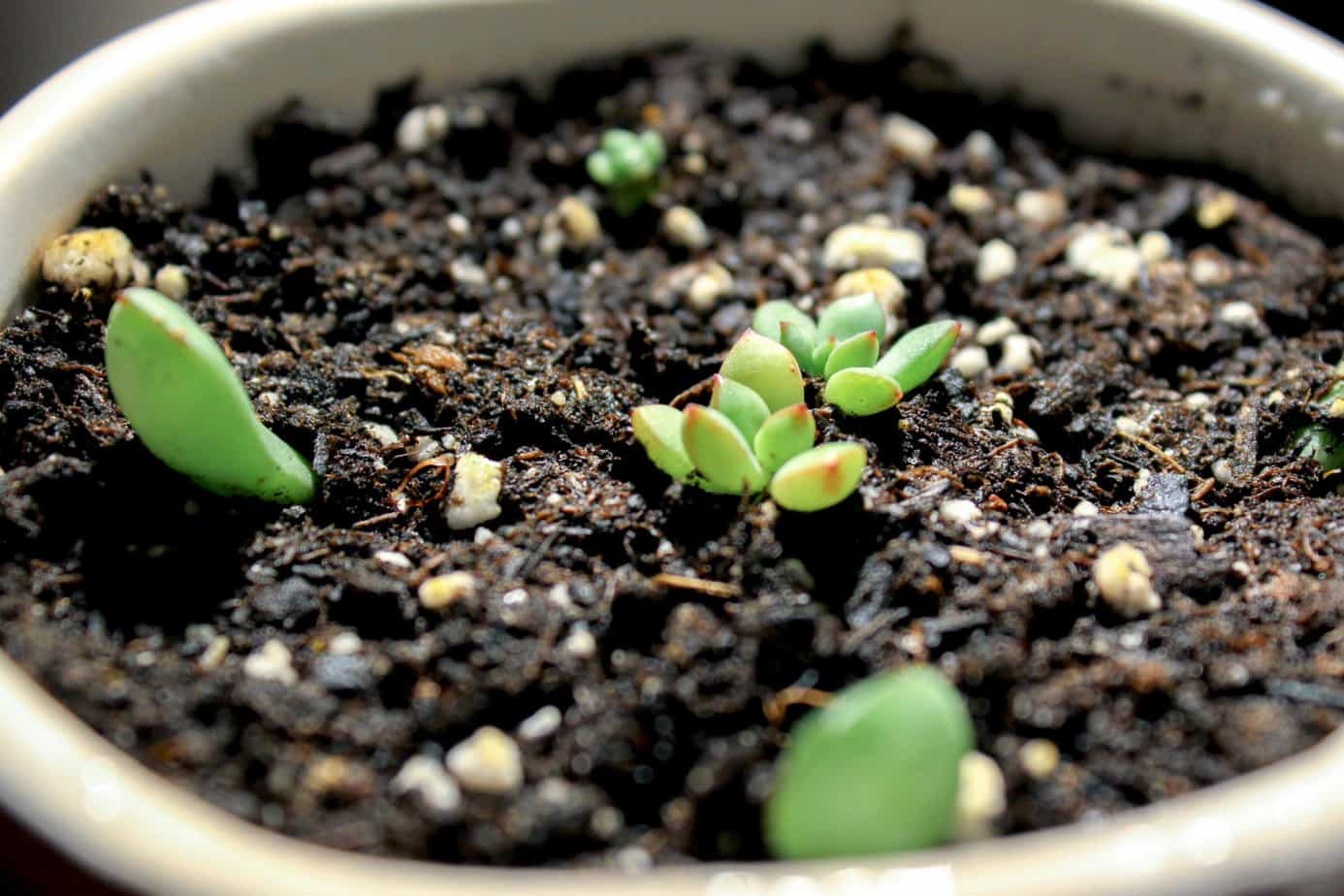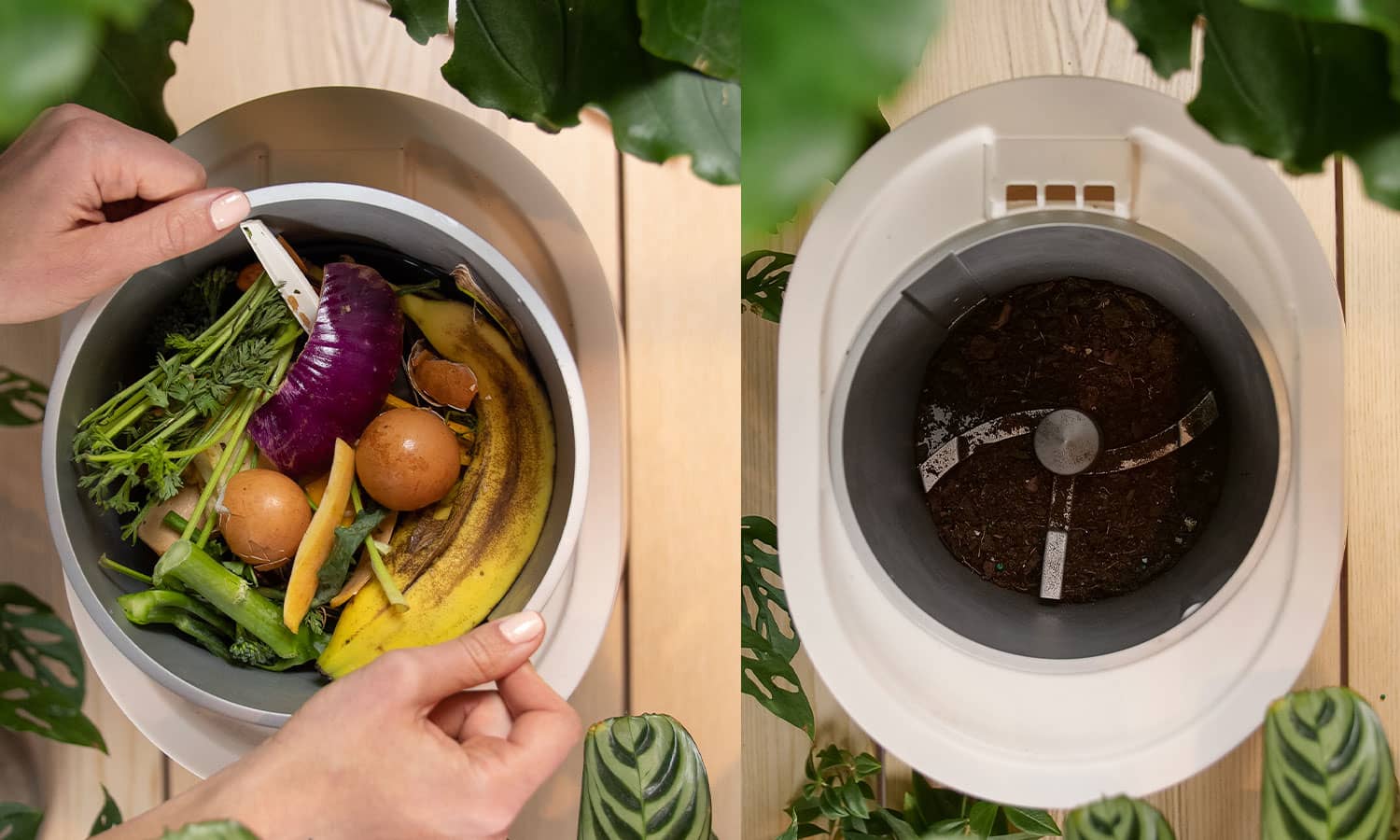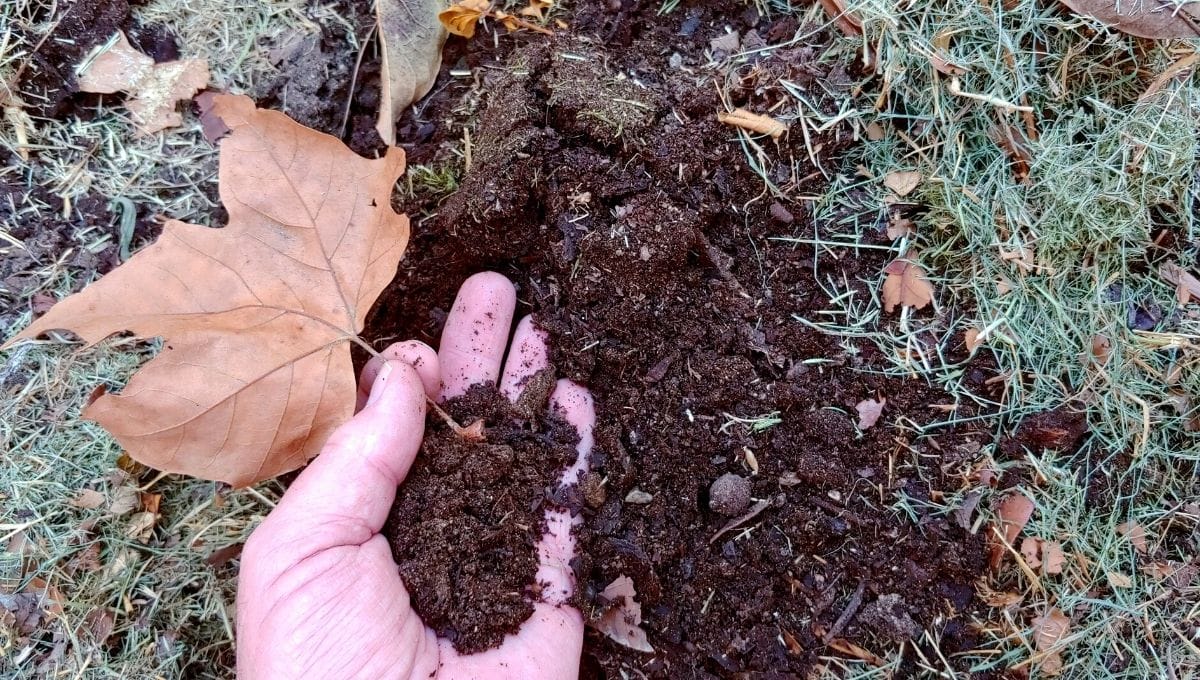Home>Types of Gardening>Ornamental Gardening>How Long Does It Take For Succulents To Propagate


Ornamental Gardening
How Long Does It Take For Succulents To Propagate
Modified: February 9, 2024
Learn all about propagating succulents in ornamental gardening and discover how long it takes for them to grow.
(Many of the links in this article redirect to a specific reviewed product. Your purchase of these products through affiliate links helps to generate commission for Chicagolandgardening.com, at no extra cost. Learn more)
Table of Contents
- Introduction
- Factors Affecting Succulent Propagation Time
- Methods of Propagating Succulents
- Leaf Propagation
- Stem Cutting Propagation
- Offsets and Pups Propagation
- Environmental Factors That Impact Propagation Time
- Watering and Fertilizing Schedule for Propagated Succulents
- Common Issues and Troubleshooting during Succulent Propagation
- Conclusion
Introduction
Welcome to the world of succulent propagation! If you have a passion for ornamental gardening and are interested in expanding your collection of succulents, then learning how to propagate these fascinating plants is a must. Succulents, with their unique shapes and vibrant colors, have become incredibly popular in recent years, making them a favorite choice for both indoor and outdoor gardens.
Succulent propagation is the process of creating new plants from existing ones, allowing you to multiply your collection and share the beauty of these plants with others. Whether you’re a seasoned gardener or a beginner, succulent propagation can be a rewarding and enjoyable experience.
But how long does it take for succulents to propagate? The answer depends on various factors, such as the method of propagation, environmental conditions, and the type of succulent being propagated. In this article, we will explore these factors in detail, providing you with the knowledge and guidance you need to successfully propagate your succulents.
Before we dive into the details, it’s important to note that patience is key when it comes to succulent propagation. Unlike some plants that grow quickly from seeds, succulents typically have a slower propagation process. However, by understanding the factors that affect propagation time and implementing proper care techniques, you can increase your chances of success.
So, if you’re ready to explore the fascinating world of succulent propagation, buckle up and get ready to learn all about this exciting gardening technique.
Factors Affecting Succulent Propagation Time
The time it takes for succulents to propagate can vary depending on several factors. Understanding these factors will help you manage your expectations and ensure the best possible outcome for your propagation efforts.
1. Plant Species: Different succulent species have varying propagation times. Some succulents are known to root and establish new plants quickly, while others may take several weeks or even months. Researching the specific species you are propagating will give you a better idea of the expected propagation time.
2. Growth Stage: The stage of growth of the parent plant can also impact propagation time. The health and maturity of the parent plant will determine the success of the propagation process. Well-established plants with thick, healthy leaves or stems tend to propagate faster than young or stressed plants.
3. Propagation Method: The method of propagation you choose can influence the time it takes for succulents to propagate. Leaf propagation, stem cutting propagation, and offsets or pups propagation are the most common methods. Each method has its own timeline, with some being faster than others. For example, leaf propagation can take several weeks to months, while stem cutting propagation can produce new plants in a matter of weeks.
4. Propagation Environment: The environment in which you propagate your succulents plays a crucial role in the time it takes for them to propagate. Factors such as temperature, humidity, and light levels can impact the speed of root development and overall plant growth. Providing optimal conditions, such as bright indirect light and well-draining soil, will promote faster propagation.
5. Care and Maintenance: Proper care and maintenance during the propagation process are essential for healthy and fast growth. Providing adequate water, but avoiding overwatering, is crucial. Applying a balanced succulent fertilizer can also promote growth and speed up propagation. Additionally, monitoring for pests and diseases and addressing them promptly will prevent setbacks and delays in propagation.
By considering these factors and implementing the necessary measures, you can manipulate propagation time to some extent. However, it’s important to note that succulent propagation is a natural process and may still take some time, so patience and perseverance are key.
Methods of Propagating Succulents
There are several methods you can use to propagate succulents, each with its own unique process and timeline. Let’s explore the most common methods below:
- Leaf Propagation: This method involves taking a healthy leaf from the parent plant and allowing it to develop roots and form a new plant. To propagate succulents through leaf propagation, gently twist a leaf off the plant, making sure to leave the petiole intact. Allow the leaf to dry for a few days to form a callus before placing it on well-draining soil. Mist the soil occasionally and be patient, as it can take several weeks to months for roots to develop and a new plant to form.
- Stem Cutting Propagation: Stem cutting propagation involves taking a stem cutting from the parent plant and allowing it to grow roots and form a new plant. Select a healthy stem and make a clean cut just below a leaf node. Remove any lower leaves and allow the stem cutting to dry for a day or two. Once dry, plant the cutting in well-draining soil and lightly mist to provide moisture. With proper care and optimal conditions, roots should develop within a few weeks, resulting in a new succulent plant.
- Offsets and Pups Propagation: Some succulent species produce offsets or pups, which are small, offshoot plants that grow from the base of the parent plant. These offsets can be separated from the parent plant and planted individually to create new plants. Gently remove the offsets or pups by carefully cutting them away from the parent plant, ensuring they have their own roots. Plant the offsets in well-draining soil, keeping them slightly moist. Over time, the offsets will grow and establish themselves as independent succulent plants.
Each propagation method has its own timeline, and it’s important to be patient as you wait for new plants to form. Keep in mind that some succulent species may propagate faster using a particular method, so consider the specific requirements and characteristics of the succulents you are working with.
Experimenting with different propagation methods can be a fun and rewarding experience. It allows you to learn more about the unique characteristics of different succulent species and discover which propagation method works best for you.
Leaf Propagation
Leaf propagation is one of the most common and fascinating methods used to propagate succulents. It involves taking a healthy leaf from the parent plant and allowing it to develop roots and form a new plant. This method is particularly popular with succulents that have thick, fleshy leaves.
To begin leaf propagation, select a mature leaf from the parent plant. Gently twist the leaf off, ensuring that the petiole or leaf stem remains intact. It’s important to choose a healthy leaf, as damaged or diseased leaves may not successfully propagate.
After removing the leaf, allow it to dry for a few days in a shady and well-ventilated area. This drying period allows the cut end to callus, which helps prevent rot and infections once the leaf is planted in soil.
Once the leaf has callused, prepare a well-draining soil mixture suitable for succulents. Place the leaf, cut end down, on the soil surface or slightly inserted into the soil. Gently press the leaf into the soil to ensure good contact and stability.
During leaf propagation, it’s essential to provide the right conditions to encourage root growth. Place the propagated leaf in a bright location with indirect sunlight. Avoid exposing the leaf to direct sunlight, as this can cause sunburn or overheating.
Mist the soil lightly with water every few days to maintain moisture. It’s important not to overwater, as succulents are prone to rot when their roots are constantly wet. Aim to keep the soil slightly moist but not saturated.
Over time, roots will begin to develop from the bottom of the leaf and extend into the soil. This process can take several weeks to months, depending on the succulent species and environmental conditions. Patience is key during this stage, as it may take some time for visible progress to occur.
Once the roots have developed and the leaf begins to show signs of new growth, such as tiny rosettes or small leaves, it is ready to be treated as a mature succulent. Allow the plant to grow and establish itself before transplanting it into its own pot or garden bed.
Leaf propagation is a rewarding method that allows you to reproduce multiple new plants from a single leaf. It’s a great way to expand your succulent collection and share the beauty of these plants with others.
Remember, not all succulents are suitable for leaf propagation. Some succulent species prefer other propagation methods, such as stem cutting or offsets. Be sure to research and understand the specific requirements of the succulent species you are working with to achieve the best results.
Stem Cutting Propagation
Stem cutting propagation is another popular method widely used to propagate succulents. This method involves taking a stem cutting from the parent plant and allowing it to develop roots and form a new succulent plant.
To begin stem cutting propagation, select a healthy stem from the parent plant. Make a clean cut just below a leaf node using a sterilized cutting tool. The cutting should be at least a few inches long to provide enough space for root development.
Once you have your stem cutting, remove any lower leaves, leaving a bare stem with a few leaves at the top. This will create a clean cutting that will sprout roots more effectively.
After preparing the stem cutting, allow it to dry for a day or two in a shaded and well-ventilated area. This drying period allows the cut end to callus, which helps prevent rot and infections when the cutting is planted.
Next, prepare a well-draining soil mixture suitable for succulents. Plant the stem cutting in the soil, burying the bare stem section about an inch or two deep. Gently firm the soil around the cutting to hold it in place.
Place the potted cutting in a bright location with indirect sunlight. Avoid exposing it to direct sunlight, as this can lead to sunburn or overheating. It is crucial to provide the right conditions for the cutting to establish roots and grow.
While the stem cutting develops roots, lightly mist the soil every few days to maintain moisture. Be careful not to overwater, as succulents are prone to root rot when sitting in waterlogged soil. Aim to keep the soil slightly moist but not overly saturated.
Over time, roots will emerge from the cut end of the stem cutting, and new growth will appear at the top. The propagation process can take several weeks, depending on the succulent species and environmental conditions. Patience is key during this period, as it may take some time for significant progress to be visible.
Once the roots have developed and the cutting shows signs of new growth and stability, it can be treated as a mature succulent. Allow the plant to establish itself further before transplanting it into its permanent pot or garden bed.
Stem cutting propagation is an effective method to create new succulent plants. It allows you to reproduce multiple plants from a single parent plant, expanding your collection and sharing the beauty of succulents with others.
Remember to research the specific requirements of the succulent species you are propagating, as each species may have variations in propagation success and timeline. With proper care and patience, stem cuttings can develop into thriving succulent plants that will bring joy and beauty to your ornamental garden.
Offsets and Pups Propagation
Offsets and pups propagation is a unique and natural method commonly seen in succulent plants. Many succulent species produce small offshoots known as offsets or pups, which emerge from the base of the parent plant. These offsets can be separated and planted individually to create new succulent plants.
To propagate succulents through offsets and pups, wait until the offshoots are large enough to be separated from the parent plant. They should have their own roots or be showing signs of root development.
Gently separate the offsets or pups from the parent plant by carefully cutting them away. Use a sharp, sterilized knife or scissors to avoid damaging the young plant. It’s important to ensure that each offset or pup has its own set of roots to survive on its own.
After separating the offsets or pups, allow them to dry for a day or two in a shaded and well-ventilated area. This drying period helps prevent rot and infections when they are planted in soil.
Prepare a well-draining soil mixture suitable for succulents. Plant each offset or pup in its own pot or garden bed, making sure it is positioned at the same depth as it was when attached to the parent plant. Gently press the soil around the offset or pup to secure it in place.
Place the newly planted offsets or pups in a bright location with indirect sunlight. Avoid exposing them to direct sunlight, as this can cause sunburn or stress. Providing the right conditions will encourage the development of a healthy root system and overall plant growth.
Water the offsets or pups sparingly, allowing the soil to dry out slightly between watering sessions. Overwatering can lead to root rot and other issues, so it’s important to maintain proper moisture levels and avoid waterlogged soil.
Over time, the offsets or pups will establish themselves and grow into independent succulent plants. The propagation time can vary depending on the particular succulent species and environmental conditions. Patience is essential, as it may take several weeks or longer for the offsets or pups to fully develop.
Once the newly propagated succulents have taken root and shown signs of new growth, you can treat them as mature plants. Continue to provide them with proper care, including appropriate watering, lighting, and fertilization, to ensure their continued growth and health.
Offsets and pups propagation is an excellent method for expanding your succulent collection. It allows you to multiply your plants easily and share their beauty with others. Remember to research the specific requirements and characteristics of the succulent species you are propagating to optimize success.
Environmental Factors That Impact Propagation Time
When it comes to succulent propagation, environmental factors play a significant role in determining the time it takes for new plants to develop and establish. Understanding these factors will help you create the optimal conditions for successful propagation.
1. Temperature: Succulents thrive in warm climates, and temperature affects the speed of root development and overall growth. Generally, temperatures between 70°F to 80°F (21°C to 27°C) are ideal for most succulents. Higher temperatures can expedite propagation, while lower temperatures may slow down the process. However, avoid exposing succulents to extreme temperatures, as this can cause stress and damage to the plants.
2. Light: Light is crucial for photosynthesis and the growth of succulent plants. Providing the right amount of light is essential for optimal propagation. Most succulents prefer bright, indirect light. Placing propagated succulents near a south or east-facing window can provide the ideal lighting conditions. However, ensure that the plants are not exposed to intense, direct sunlight, as this can cause sunburn and damage the delicate new growth.
3. Humidity: Succulents are adapted to low humidity environments and can be sensitive to excessive moisture in the air. Higher humidity levels can slow down propagation and increase the risk of fungal infections. Ensure good air circulation around the plants to prevent excess humidity. If you live in a humid climate, consider using a dehumidifier or placing the succulents near a fan to promote air movement.
4. Soil Drainage: Well-draining soil is crucial for successful succulent propagation. Soil that retains too much moisture can lead to root rot and hinder the development of new roots. Use a succulent-specific soil mix or create your own by combining potting soil with perlite or coarse sand to improve drainage. Ensure that the soil is loose and airy, allowing excess water to flow away from the roots.
5. Air Circulation: Proper air circulation is vital for succulent propagation. Good airflow helps prevent the buildup of excess moisture and reduces the risk of fungal diseases. Avoid overcrowding the plants and provide adequate space between them to promote air movement. If growing succulents indoors, you can use fans or open windows during mild weather to improve air circulation.
By understanding and controlling these environmental factors, you can create an environment that promotes faster and healthier succulent propagation. Monitoring the temperature, light, humidity, soil drainage, and air circulation will help you provide the best conditions for your succulents to thrive and propagate successfully.
Watering and Fertilizing Schedule for Propagated Succulents
Proper watering and fertilizing are crucial for the successful growth and establishment of propagated succulents. While succulents are known for their ability to tolerate drought, they still require adequate moisture and nutrients. Understanding the appropriate watering and fertilizing schedule will help ensure healthy and thriving new plants.
Watering:
When it comes to watering propagated succulents, it’s important to strike a balance. Overwatering can lead to root rot, while underwatering can hinder growth and cause dehydration. Here are some guidelines to follow:
- Allow the soil to dry: Before watering, make sure the soil has dried out completely. Stick your finger about an inch into the soil to check for moisture. If it feels dry, it’s time to water. Succulents prefer a “dry and soak” watering method, where the soil is thoroughly soaked and then allowed to dry out before the next watering.
- Water deeply but infrequently: When watering propagated succulents, water deeply until water drains out of the drainage holes. Ensure that the entire root zone is moistened. However, do not water again until the soil has completely dried out. This watering technique encourages the development of a robust root system.
- Adjust watering based on environmental conditions: Factors such as temperature, humidity, and sunlight levels can influence the watering needs of succulents. During hot and dry weather, succulents may require more frequent watering. Conversely, in cooler and more humid conditions, you may need to water less frequently.
- Be cautious with misting: While misting the soil or leaves of succulents can provide a bit of additional moisture, it should not replace regular deep watering. Misting is best used to increase humidity when necessary or to provide a bit of moisture to dry leaves.
Fertilizing:
Fertilizing propagated succulents is essential to provide the necessary nutrients for growth and development. However, it’s important not to overdo it, as succulents are adapted to nutrient-poor environments. Here are some guidelines for fertilizing succulents:
- Choose the right fertilizer: Select a balanced, water-soluble fertilizer specifically formulated for succulents. Look for a fertilizer with a low nitrogen content and a higher proportion of phosphorus and potassium.
- Fertilize sparingly: During the growing season, which is typically spring and summer, fertilize your propagated succulents once a month at half the recommended dose. Dilute the fertilizer in water and apply it to the soil around the plants. Restrain from fertilizing during the dormant season, which is usually fall and winter.
- Monitor for signs of overfertilization: Too much fertilizer can cause succulents to become leggy, develop burned or discolored leaves, or even die. If you notice any signs of overfertilization, thoroughly flush the soil with water to remove excess salts and adjust your fertilizing routine accordingly.
- Apply fertilizer to the soil, not the leaves: While foliar feeding with a diluted fertilizer solution can be beneficial, it’s generally best to focus on applying fertilizer to the soil. Succulents absorb nutrients through their roots, so direct soil application is the most effective method.
By following a proper watering and fertilizing schedule, you can provide the essential moisture and nutrients needed for the successful growth of your propagated succulents. Remember to adjust the frequency based on the specific needs of your plants and the environmental conditions they are exposed to. With proper care, your propagated succulents will thrive and become beautiful additions to your ornamental garden.
Common Issues and Troubleshooting during Succulent Propagation
While succulent propagation can be a rewarding and enjoyable experience, it’s not without challenges. Several issues may arise during the process that can hinder the success of your propagation efforts. Understanding and troubleshooting these common problems will help you overcome obstacles and ensure the health and vitality of your propagated succulents.
1. Root Rot: One of the most common issues in succulent propagation is root rot. It occurs when the roots are exposed to excessive moisture or stagnant water. To prevent root rot, make sure you use well-draining soil and allow the soil to dry out between watering sessions. Avoid overwatering and be careful not to water the plants too frequently.
2. Lack of Root Development: If you notice that your propagated succulents are not developing roots, it could be due to several factors. First, check the environmental conditions. Ensure that the temperature is within the appropriate range and that the plants are receiving sufficient light. Additionally, make sure you are providing adequate time for the callused cuttings or propagated offsets to establish roots. Patience is key in this process, as root development can take several weeks.
3. Stretching or Legginess: Succulents can become stretched or leggy if they are not receiving enough light. This happens when the plants try to elongate in search of more light. To prevent this, provide bright, indirect light to your succulents. Move them to a location with more sunlight if necessary. If the plants have already become leggy, you can prune them back to encourage bushier growth.
4. Pests and Diseases: Succulents can be susceptible to common pests such as mealybugs, aphids, and spider mites. Regularly inspect your propagated succulents for any signs of pests or diseases and take appropriate action to control them. If infestations occur, isolate the affected plants and treat them with organic insecticidal soap or other appropriate pest control methods.
5. Transplant Shock: When transplanting propagated succulents to their permanent pots or garden beds, they may experience some shock or stress. To minimize transplant shock, handle the plants carefully and avoid damaging the tender roots. Allow the plants to adjust to their new environment by gradually increasing their exposure to direct sunlight and adjusting their watering routine accordingly.
6. Lack of Growth or Stagnation: If your propagated succulents seem to have stalled in growth or show no signs of progress, review their care routine. Ensure they are receiving adequate light, proper watering, and a suitable temperature range. Check for any signs of nutrient deficiencies and adjust your fertilization routine if needed. Sometimes, succulents may go through periods of dormancy where growth slows down. Patience and consistent care will generally encourage new growth.
By recognizing and addressing these common issues, you can improve your chances of success in succulent propagation. Remember to monitor your plants closely, adjust the care routine as necessary, and be patient. With time and proper care, you’ll witness the beauty of your propagated succulents flourishing and adding charm to your garden.
Conclusion
Succulent propagation is a fascinating and rewarding technique that allows you to multiply your collection of these beautiful plants. By understanding the factors that influence propagation time, such as plant species, growth stage, propagation method, and environmental conditions, you can successfully propagate succulents and enjoy watching them grow and thrive.
Leaf propagation, stem cutting propagation, and offsets or pups propagation are the primary methods used in succulent propagation. Each method has its own unique process and timeline, offering different levels of success for different succulent species.
Environmental factors, including temperature, light, humidity, soil drainage, and air circulation, significantly impact the propagation process. Providing optimal conditions helps create an environment where succulents can establish roots and grow into healthy plants.
When it comes to watering and fertilizing propagated succulents, striking the right balance is crucial. Watering should be done deeply but infrequently, allowing the soil to dry out between waterings. Fertilizing should be done sparingly, using a balanced fertilizer suitable for succulents and following a monthly schedule during the growing season.
During the propagation journey, you may encounter common issues such as root rot, lack of root development, stretching, pests and diseases, transplant shock, or lack of growth. By troubleshooting these issues and adjusting your care routine, you can overcome challenges and achieve successful propagation.
In the end, succulent propagation is a blend of patience, experimentation, and care. Each propagated succulent represents a new beginning, as you witness the transformation from a small cutting or offset into a robust and vibrant plant. So, roll up your sleeves, grab your gardening tools, and dive into the world of succulent propagation. With knowledge, practice, and a touch of creativity, you can create an impressive collection of succulent plants that will bring beauty and serenity to your ornamental garden.









